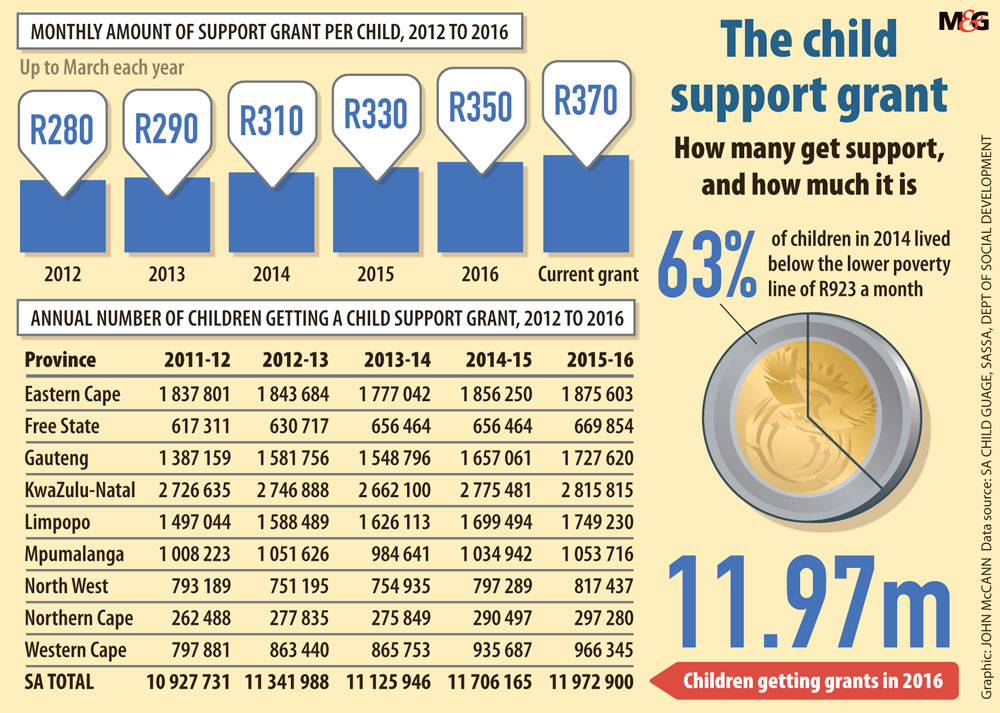Pay point: Social grant recipients queue in Johannesburg. A fee for CPS
The child grant has significantly improved the lives of the nearly 12-million children, through better nutrition to helping put them through school.
This is according to the editor of a leading publication on the subject, the South African Child Gauge.
“Research has shown that the grant has affected the children’s nutrition, reduced stunting, supported children to go to school, and grade progression has been better,” Aislinn Delany said.
The report rates it as one of the country’s most successful social policies – despite the grant allocation of R370 a child being below the food poverty line.
The South African Child Gauge is published annually by the University of Cape Town’s Children’s Institute and monitors the government’s progress in realising the rights of children. Released last week, it emphasised the need for the policy, which helps millions of children mired in abject poverty.
The child-grant budget has grown over the years to more than R4.4-billion, with the highest concentration of the recipients in KwaZulu-Natal.
Although most provinces saw an increase in the number of child grants between 2011 and 2015, it was minimal. In 2011, Limpopo had nearly 1.6-million children receiving grants, which increased to more than 1.7-million over the past five years. North West saw similar increases, going from 752 000 child grant beneficiaries on its system to 817 000.
These numbers bust the myth that people are having more babies simply to benefit from the grant, according to Janet Jobson, the director of programmes at the DG Murray Trust.
“The population of young children in South Africa has not grown substantially over the past decade, showing that poor households are not, in fact, having increasing numbers of children,” she said.
She added that the number of children living in poverty has also declined, dropping from 79% in 2003 to 63% in 2014, “largely as a result of the expansion of social grants”.
The five-year data in the Child Gauge shows that a fifth of the country’s more than 18-million children live in KwaZulu-Natal, which also has one of the highest poverty rates. “Over three-quarters of children in Limpopo, KwaZulu-Natal and the Eastern Cape are poor,” according to the report.
In 2011, KwaZulu-Natal, which is predominantly rural, had more than 2.6-million children benefiting from the grant. By last year, this had risen to nearly three million.
Child poverty is greatest in the rural areas of the former homelands, where 84% of children live below the poverty line.
